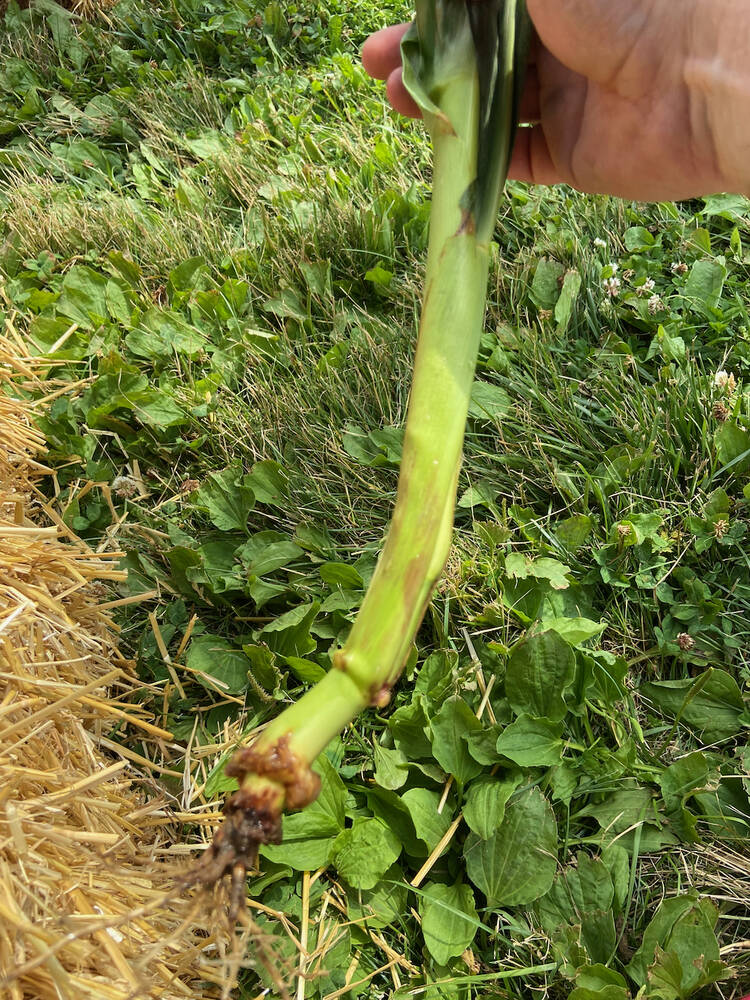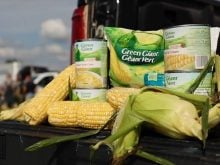It takes more work to manage corn rootworm because the insects increasingly resist the Bt trait found in most corn varieties.
Researchers are working on alternatives, including integrated risk management procedures and RNA interference (RNAi) technologies that will soon be on the market. Older technologies to manage corn rootworm may also return.
However, crop rotation is still considered the best method of control.
Read Also

Packer buys Green Giant, Le Sieur veg brands from U.S. owner
A Quebec-based processor’s deal to buy the Green Giant and Le Sieur packaged and frozen vegetable brands in Canada from a U.S. owner clarifies the status of two popular retail brands grown by Canadian farmers.
Why it matters: Corn rootworm is a long-time pest of corn in Ontario, causing poor stands and lost yield.
Soil-applied insecticides were used before the Bt trait was transferred into corn hybrids, but few corn planters still have insecticide boxes, says Tracey Baute, OMAFA’s field crop entomologist. She spoke at SouthWest Diagnostic Days earlier this summer at the University of Guelph’s Ridgetown campus.
Leaf-applied insecticides are a newer option and include Cimegra, but in the U.S., the pests have developed resistance to that treatment.
There are only four types of Bt traits on the market, so rotating them won’t have enough effect, says Ridgetown campus’s Jocelyn Smith.
“So we see the theme that everything that we throw out consistently all the time, all the time, develops resistance,” says Baute. “There’s a couple of grasses that they can survive on but not well, and certainly not to the point of building up in populations. They need corn.”
Rotation is critical to manage the pest, especially on clay soils where the beetles prefer to lay their eggs.
“If you plant a non-corn crop for just one year even, you break their cycle and you kill off all those larvae that hatch out that year.”
Monitor corn crops and if by August there are one or two beetles per plant, reconsider planting corn in the same field in the following year, experts advise.
A new option just coming onto the market is RNA interference or RNAi.
“This is a little teeny piece of genetic material that’s in the plants that when the beetles eat it, it goes into their system and it disrupts their DNA replication and it shuts down production of a protein that they have to have to live,” says Smith.
However, resistance is expected to develop in about three years.
“Switching companies isn’t resistance management and we want to talk to the growers about not over-using it, like three years max in a row to use it in a field,” says Smith.
Earlier appearance
Tuesday Kristiansen of Corteva AgriScience said at Diagnostic Days that corn rootworm appeared to hatch and develop earlier than usual this year. Here’s why:
- Corn rootworms have one generation per year. They lay eggs in the fall and have a diapause period over winter to initiate hatching the next year.
- Eggs hatch around June 10 in Ontario in a usual year.
- Based on larvae feeding earlier this year and the number of early growing degree days, corn rootworm caused damage earlier than usual. “Those rootworm will feed starting on the fibrous roots when they’re quite small, and then they’ll move into feeding on that nodal root system and it’ll cause what we call a goose-necking effect in the field.”
- To identify corn rootworm, dig up plants and look for the larvae, says Kristiansen. There aren’t many other insects that cause damage at the same time and at the same level.
- The fact that rootworm eggs are laid in fall and hatch in spring exacerbates problems with corn planted after corn. The corn rootworm prefers to lay eggs in corn, so planting corn the next year provides a ready environment for them to thrive. That differs from other insects that winter in nearby host sites and then move into the field.















